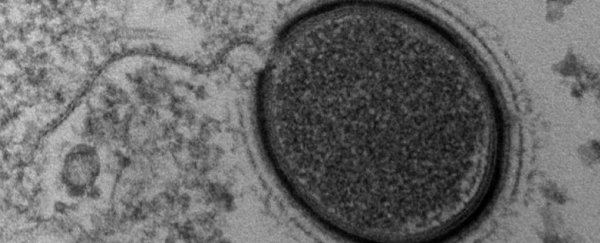French researchers have announced that they will be reanimating a 30,000-year-old prehistoric virus, having discovered it deep underground in the frozen wilderness of north-eastern Siberia.
Mollivirus sibericum, which translates to "soft virus from Siberia", is the fourth such 'giant virus' discovered this century. The same team of scientists discovered another of these, Pithovirus sibericum, last year, and Mollivirus sibericum was isolated from the same sample of permafrost.
These prehistoric viruses are called 'giant viruses' because they're visible by light microscopy, with lengths greater than half a micron - a thousandth of a millimetre. As bugs go, they're big.
If the idea that scientists are going to wake this thing up sounds a little disconcerting – and, to be honest, it's not altogether unlike the opening scenes of a plague disaster movie – don't worry. The researchers say they will only revive the virus if they can be certain it's not a threat to animals or humans.
But that doesn't mean we shouldn't be concerned about the possibility of frozen prehistoric viruses thawing out all by themselves in the future. "The fact that two different viruses retain their infectivity in prehistorical permafrost layers should be of concern in a context of global warming," the scientists warn in their study.
Intentionally infecting an amoeba in a controlled laboratory setting is one thing, but with permafrost thawing as the world gets hotter – and mining companies look to explore new, icy territories to tap hidden mineral deposits underground – the risks of accidentally uncovering a prehistoric pathogen are very real.
"A few viral particles that are still infectious may be enough, in the presence of a vulnerable host, to revive potentially pathogenic viruses," Jean-Michel Claverie, one of the researchers, told AFP. "If we are not careful, and we industrialise these areas without putting safeguards in place, we run the risk of one day waking up viruses such as small pox that we thought were eradicated."
The findings are published in PNAS, Proceedings of the National Academy of Sciences of the United States of America.
